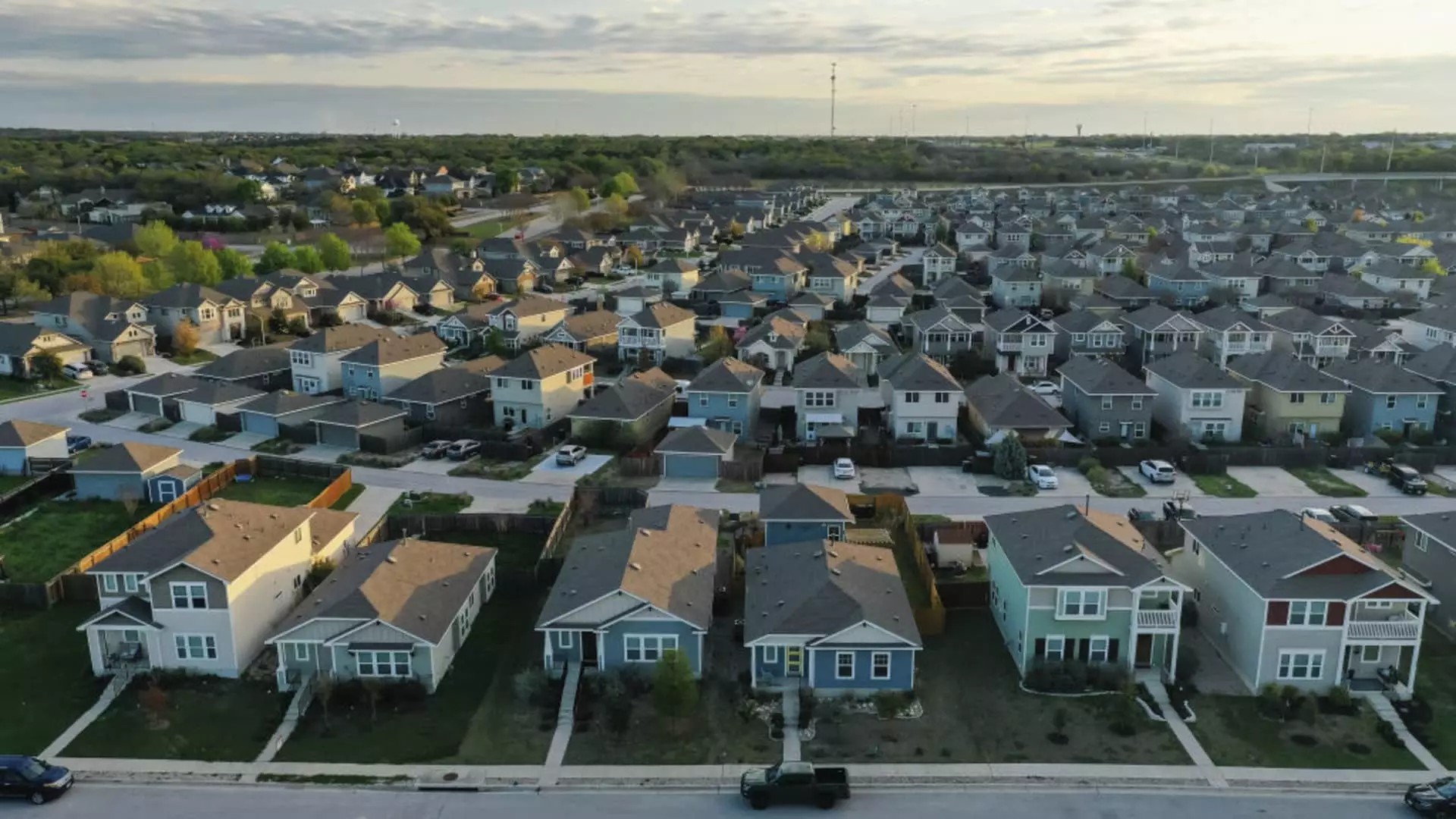In the current housing landscape, homebuyers are demonstrating a clear hesitation in engaging with the spring market. Despite the emergence of new listings, there remains a pervasive uncertainty that detracts buyers from rushing into what is traditionally a busy season for real estate. The sustained high mortgage rates and rising property prices are contributing to this anxiety. According to the Mortgage Bankers Association, mortgage applications for new purchases have seen a significant decline, dropping 4% week-over-week, with demand remaining stagnant compared to the previous year. This stagnation underlines a notable shift in buyer confidence, revealing concerns surrounding economic stability and affordability.
Mortgage Rates: A Barrier to Entry
Mortgage rates have shown little movement recently, hovering at rates that many potential buyers find unpalatable. The latest data indicates a slight decrease in the average contract interest rate for 30-year fixed mortgages, which dropped to 6.97%. However, this minor dip does little to alleviate the pressure on buyers, many of whom find themselves facing loan amounts that have escalated since the beginning of the year. As the average loan amount has now reached a staggering $447,300—marking the highest level since late 2024—it becomes apparent that affordability remains a core issue for many prospective homeowners.
Additionally, industry analysts point out the enthusiasm surrounding refinancing options has spiked, with a remarkable 12% increase in refinance applications observed in just one week. Yet, this uptick in refinancing interest is somewhat misleading, reflecting a market where many existing homeowners hold onto lower rates from previous years, hence dampening the overall demand for new purchases.
Market Sentiment and Behavioral Trends
The housing market is caught in a paradoxical cycle, where sales are plummeting to near-historic lows, yet prices continue to reach new heights. With home sales languishing near a 30-year low and the percentage of sellers making price reductions barely edging up—from 14.7% last year to 15.6% this January—it’s critical to understand the psyche of today’s homebuyer. Buyers are facing an uphill battle, systematically discouraged by escalating prices and a tenuous economic backdrop.
Many sellers remain firm on their listing prices, bolstered by competitive demand in certain areas. This creates an environment where price negotiation is limited, adding further constraints for buyers attempting to enter the market. Coupled with a 25% year-over-year increase in home listings, the extended duration to sell a property—averaging at 54 days, the longest since March 2020—indicates that while supply is increasing, buyer activity remains robust in certain segments, complicating the dynamics for those looking to make a purchase.
The current housing market embodies a complex interplay of rising prices, wavering buyer confidence, and persistently high mortgage rates. As buyers grapple with the reality of elevated costs, many are choosing to wait rather than jump into a market rife with uncertainty. For sellers, the increasing number of listings juxtaposed with prolonged selling timelines suggests a cautious approach is warranted. The outlook for the spring market remains unclear, entangled in this intricate web of buyer hesitancy and seller resolution, as both parties navigate the currents of an ever-evolving real estate landscape.

